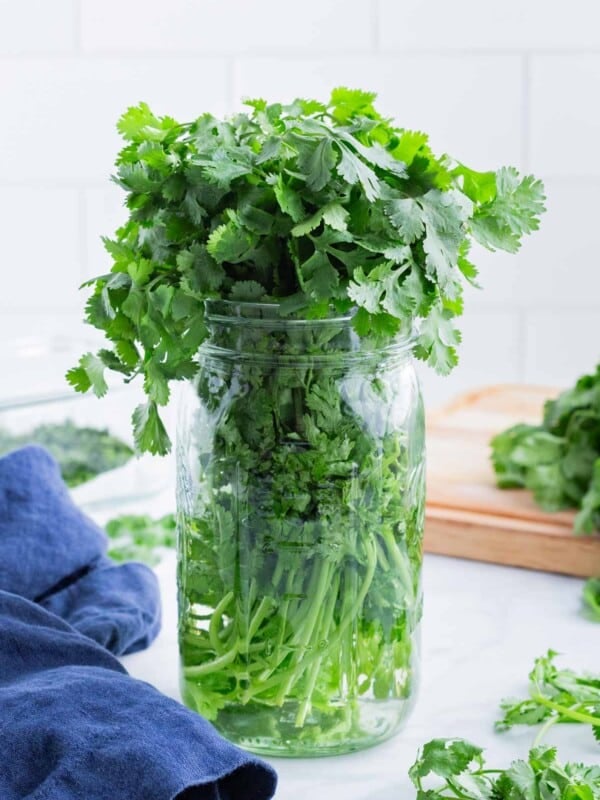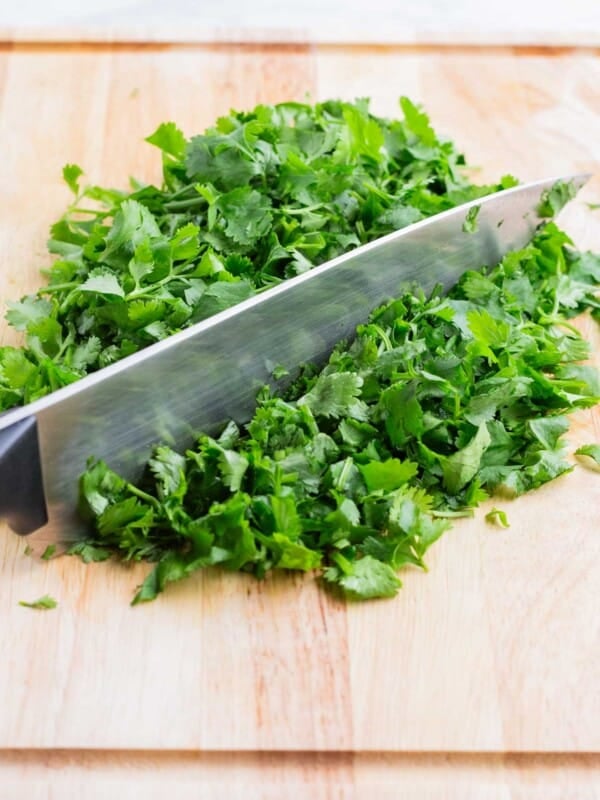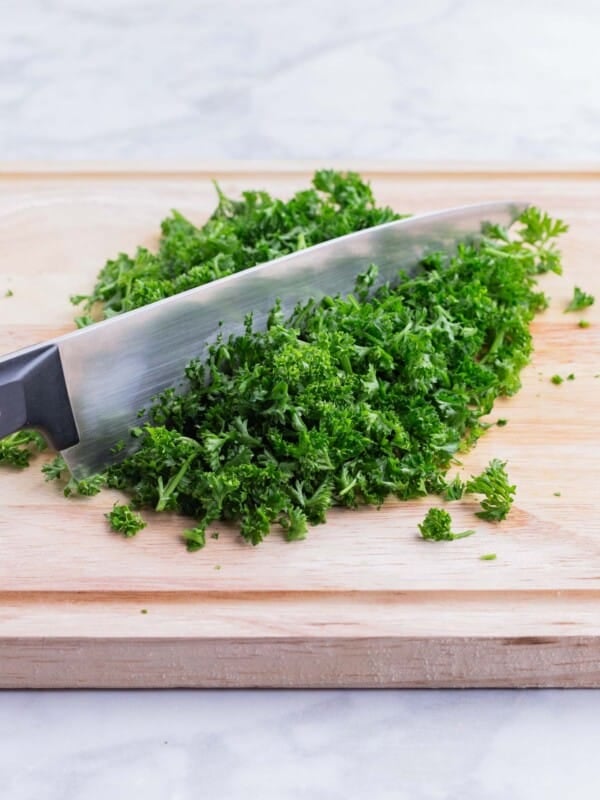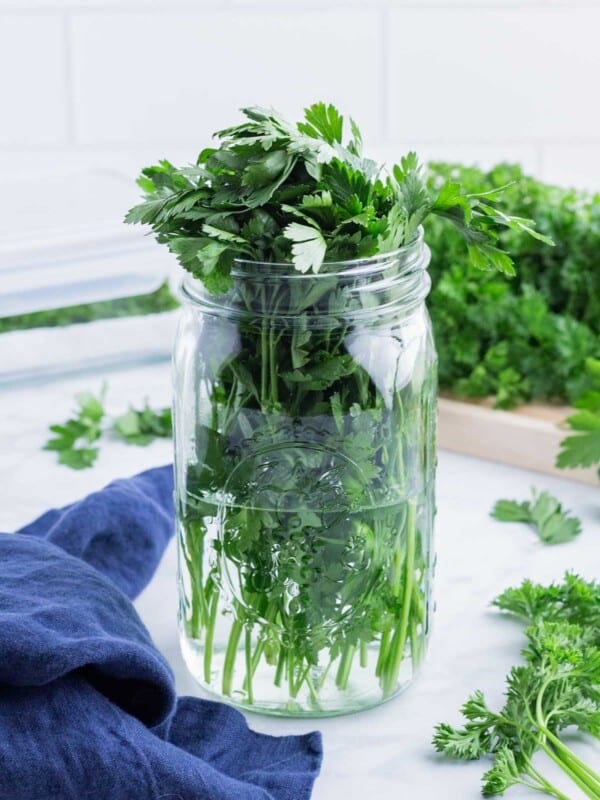Is your soup too thin and wondering how to thicken it? This post has all the tips and tricks for how to do this without changing its flavor. Following these methods will get you that silky texture you want in a hearty bowl of soup—all with ingredients you probably already have on hand!
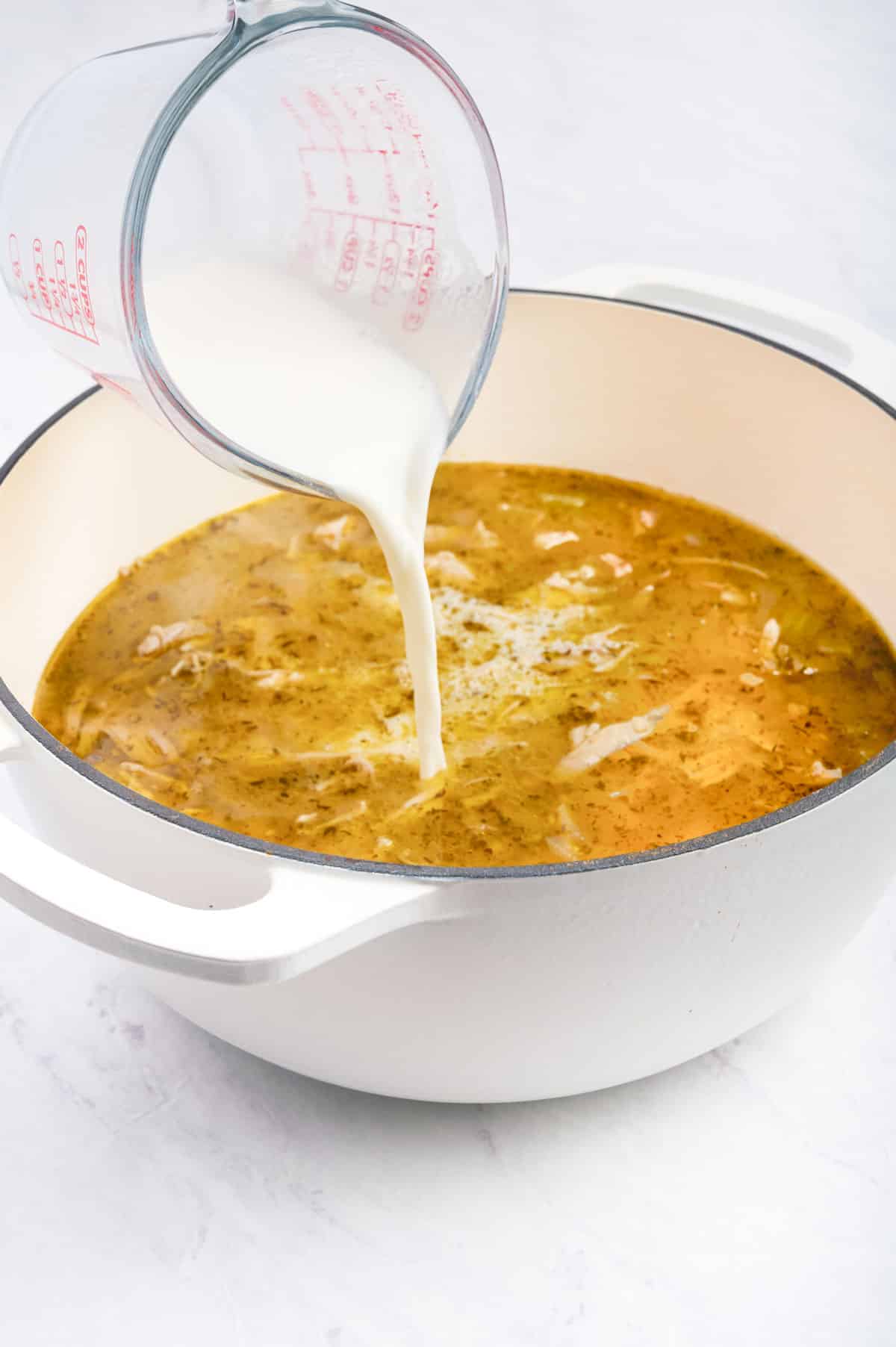
Easy Ways to Make a Soup Thicker
There are different techniques for thickening soups to make them creamy. Dairy products, immersion blenders, and starches or flours are just a few. Let’s take a look at these methods!
(There are a few different ways that work if you’re wondering how to thicken chili, too!)
1. Thicken with a Starch
Cornstarch is the best way to thicken up soup. To prevent clumping, simply whisk together a tablespoon of starch with either milk or water, warmed up. This mixture is known as a “slurry.”
With this method, you want a 1:4 ratio of starch to liquid. It won’t thicken right away, so let your soup boil for at least a minute. But don’t let it go for too long, or your soup will thin out again. This method is the easiest way, but if not done properly it won’t make much of a difference to your soup.
For more information, learn how to make a slurry.
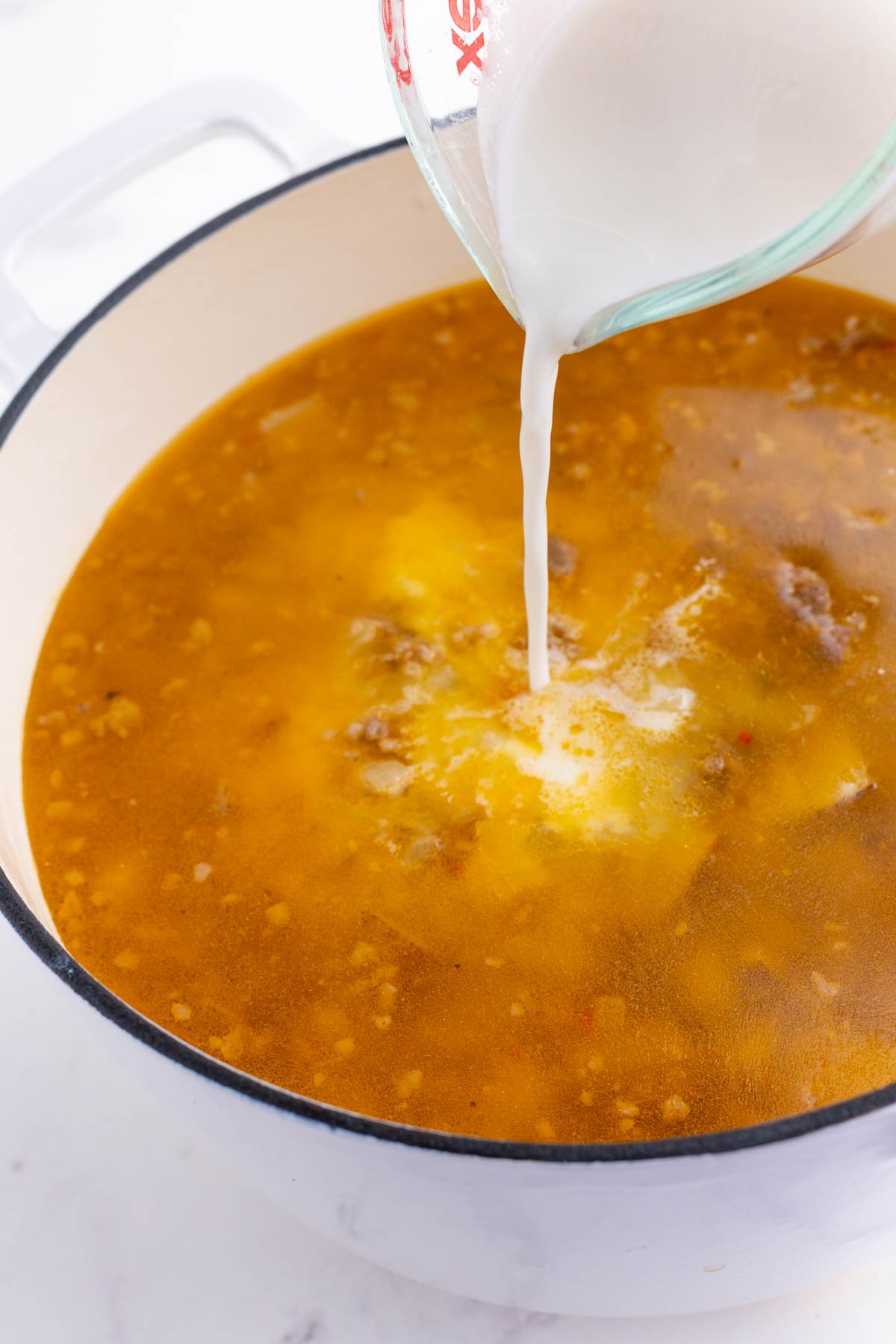
All-purpose flour is like cornstarch, but you can do more with it. You’ll want a ratio of 2:1, flour to liquid (water or milk). You can use the same process as the cornstarch for making a slurry, where you mix the flour and warm liquid together before adding it to your thin soup.
You can also create a roux with flour and some kind of fat (butter, Crisco, oil). Using a 2:1 ratio, warm the fat in a pan, then add your flour and let it cook in whatever fat you’re using, whisking, until it turns into a golden brown paste.
Often a roux needs to be incorporated into a cold mixture to reduce clumping, but that’s not always the case. To really prevent any mishaps, simply scoop out a portion of the soup in a separate bowl and pour the roux in. Mix the two together, then add that back to the big pot of soup.
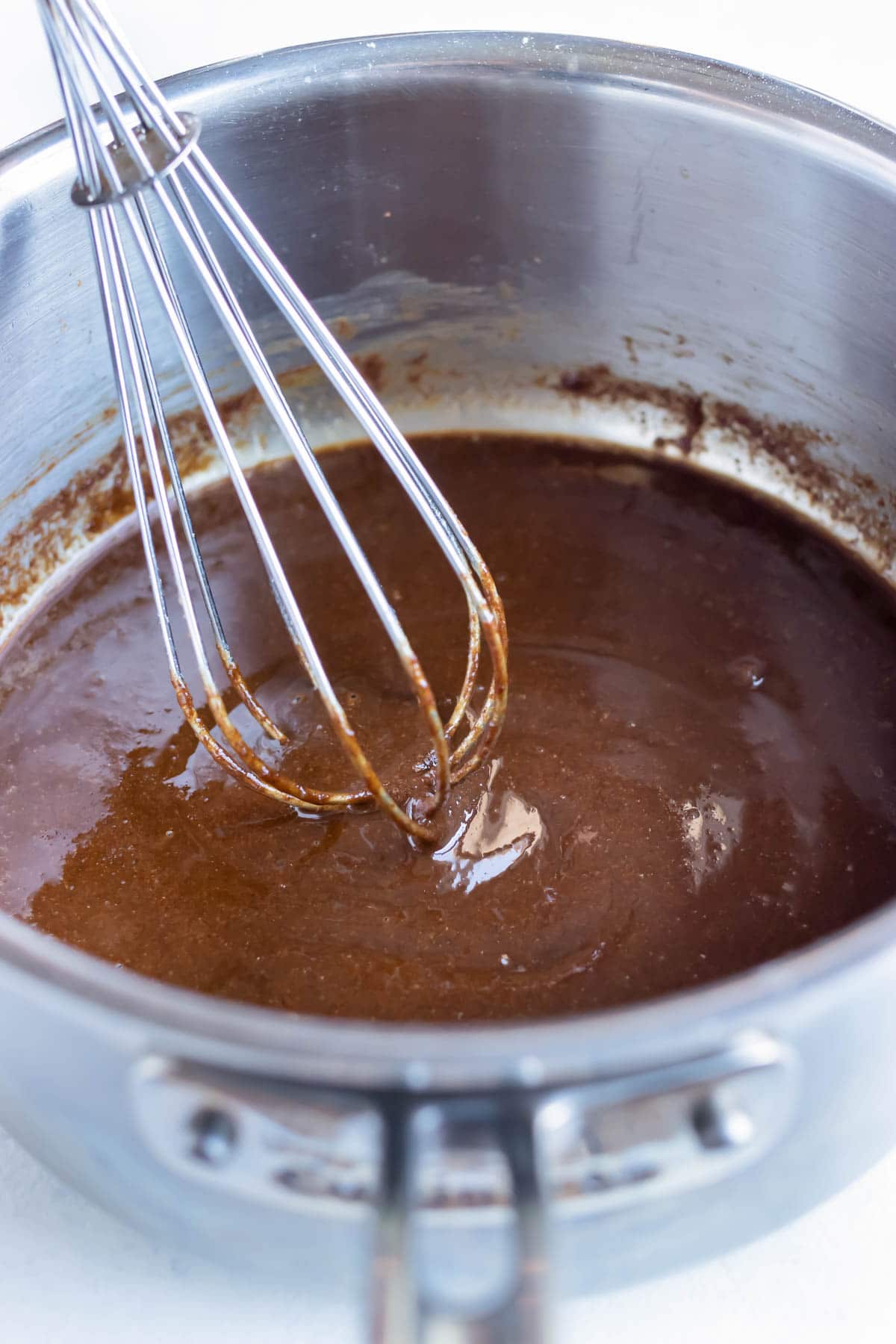
Xanthan Gum also acts like a starch, but it’s sugar-based. It has the potential to make your soup sweeter depending on how much you actually use, but it’s an excellent thickener or stabilizer. This one is tricky when it comes to clumping, so only whisk in a teaspoon at a time on low heat.
2. Thicken with Dairy
Heavy Cream. If you’re not a fan of slurries or roux, dairy is your next best method. Dairy adds a velvety texture that results in rich and creamy soups. Dairy can curdle your soup, so make sure to stick to higher-fat content products (coconut milk, heavy cream, sour cream) instead of milks.
For the best results, add heavy cream to your soup toward the end of cooking, when it’s not boiling. Adding a small amount of dairy at a time on a low heat will help you evenly incorporate it into your soup.

Yogurt or Buttermilk. To prevent any curdling at all, yogurt and buttermilk can be added to cold soup if you’re eating leftover soup. If you’re eating the soup the same day, add these thickening agents slowly to a pot of soup on low heat.
3. Thicken with a Blender
You don’t always have to add something to your soup to make it creamy. Another simple way to thicken soup is to use something like an immersion blender. This does more to the texture of your soup than the flavor. These blenders are so handy because you can use them directly in your soup pot!
Immersion blending vegetables and potatoes is what’s recommended. You can also choose to blend only some of it, if you want a chunkier soup with some heft to it. Remember that your texture will be more mushy over smooth.
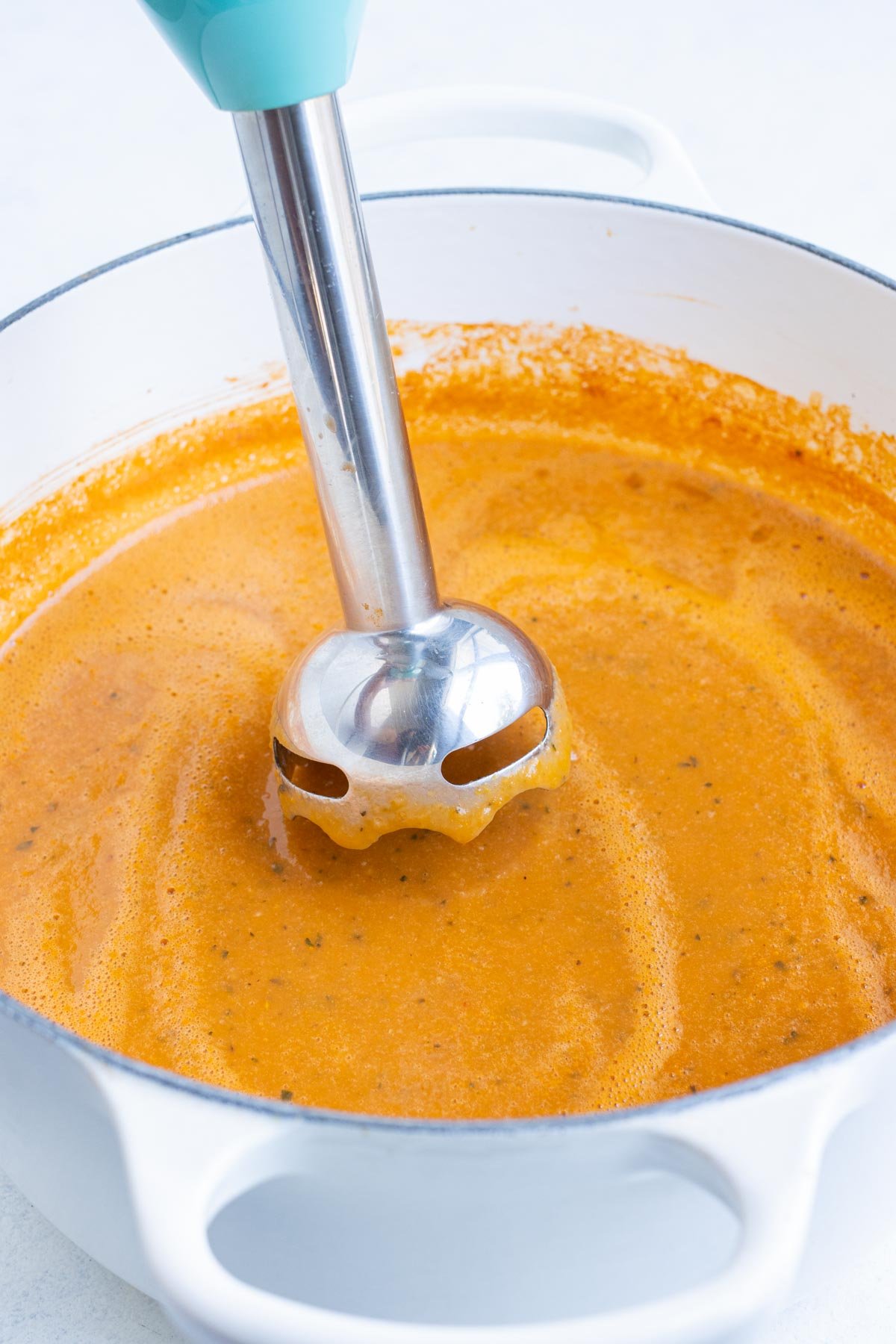
If you’re wanting a smoother texture with blending, a food processor or countertop blender is another great option. Make sure your soup isn’t scorching hot, start with a pulse or on a low speed, then gradually turn it up to reach your desired consistency.
Don’t forget to completely cover the tops of these blenders with a towel, or the hot liquid will explode everywhere.
4. Thicken with an Egg
Surprisingly, egg whites and egg yolks are great thickeners too! This option is good for lemony, creamy soups. You’ll temper your eggs by whisking them together with a small amount of soup in a small bowl.
Then slowly add this mixture into your pot of soup. This one’s not as common, so if you’re all out of options, give this a try!
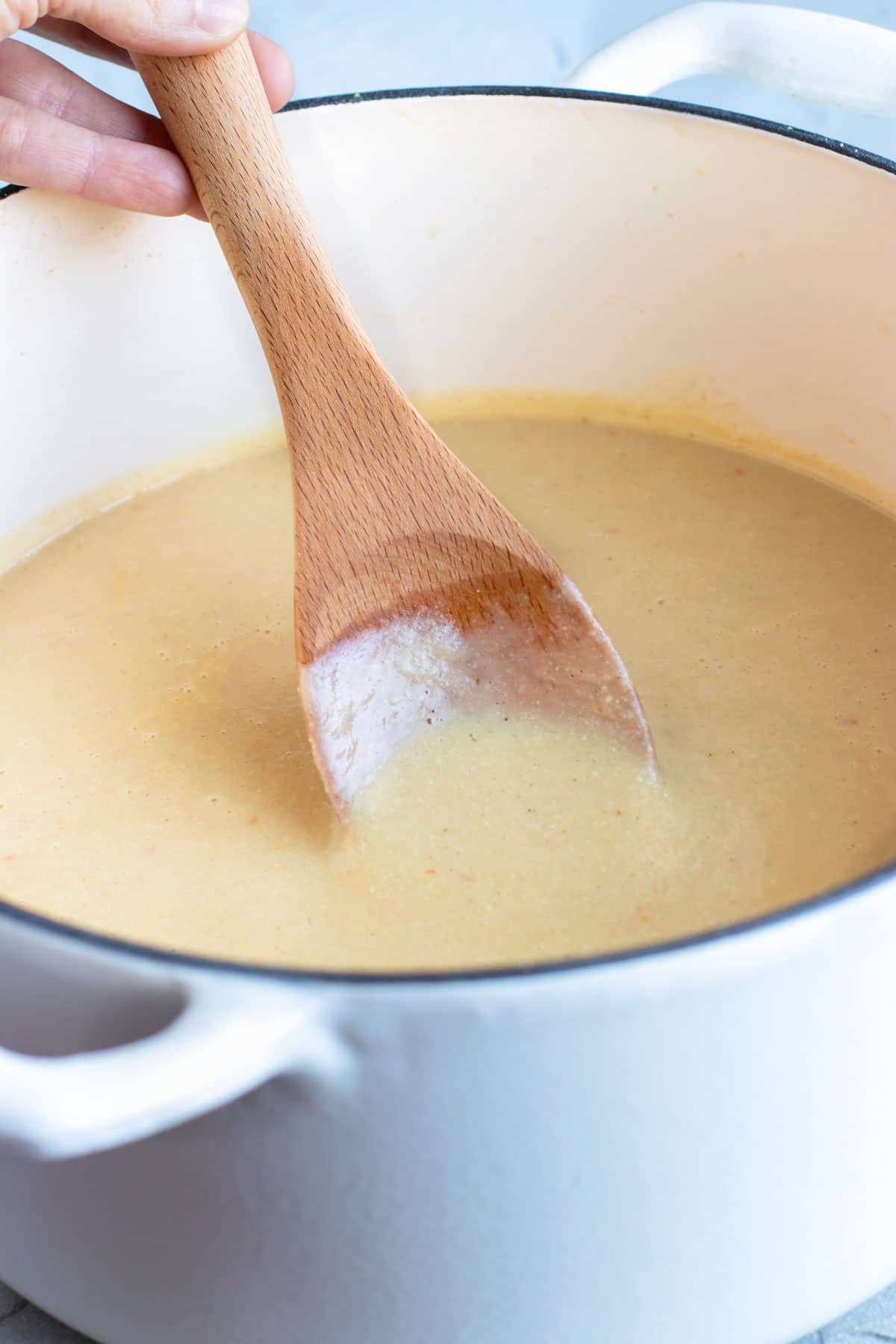
5. Thicken with Add-Ins
Adding starchy ingredients like rice, potatoes, pasta, beans, or bread (even stale bread!) can thicken AND add texture and body to your soup. How does this work? When your soup is cooking with one or more of these add-ins, the food releases starch into the soup.
It’s like adding a cornstarch, arrowroot starch, or rice flour without creating a slurry. It’s recommended to add these starches towards the beginning of the cooking process, so they have enough time to break down and thicken your soup.

Is it better to thicken soup with flour or cornstarch?
Cornstarch may be a better thickener over flour. It’s important to know that cornstarch is twice as powerful as flour. For example, if a recipe for gravy calls for 4 tablespoons of flour, you would only need to use 2 tablespoons of cornstarch.
Flour also begins to form clumps sooner and faster if you aren’t mixing quickly enough. On the other hand, cornstarch shows an immediate change in your soup. It easily absorbs liquid faster than flour because it is such a fine powder.

Does soup thicken best covered or uncovered?
Cooking any kind of soup uncovered allows water to evaporate. If your goal is to thicken a soup, don’t use the lid. The longer you cook your soup uncovered, the less liquid it will contain and the thicker your soup will be.
On top of this, the flavors in the soup have more time to meld together and create that burst of flavor you’re looking for.
You can either blend starches or vegetables in your soup, or use more starches—like beans, pasta, and rice—during the cooking process.
Yes, by leaving your soup uncovered as it cooks, you can reduce the amount of liquid it contains.
Cornstarch. A little bit goes a long way if done properly.
Using natural starches like potatoes, rice, or beans in your soup will naturally release their own starch in the soup as it’s cooking.
Some say that potato starch is the strongest because it is a coarser starch that easily soaks up liquid.
Judge this by the taste and consistency. There shouldn’t be any raw flour or starchy taste when it’s completed. It should also have a smooth texture that can coat the back of a spoon.
Normally it takes from 3 to 5 minutes.

Delicious Soup Recipes
If you’re looking for The Best Healthy Soup Recipes, check out this post for the heartiest soups. For a thick, creamy soup, try out this vegan Roasted Tomato Basil Soup. This Italian Wedding Soup is perfect for any event.
Try this healthy version of Cauliflower Soup or this OOlive Garden Minestrone Soup will leave your guests wanting more! For a simple, easy dinner give this Crock-Pot Chicken Tortilla Soup a go.
Want something new? This Cream of Asparagus Soup will work wonders for your next soup night. Don’t forget about this Roasted Butternut Squash Soup this fall. And you’ll really bring the wow factor with this colorful Creamy Beet Soup with Coconut Milk for your next potluck dinner.
